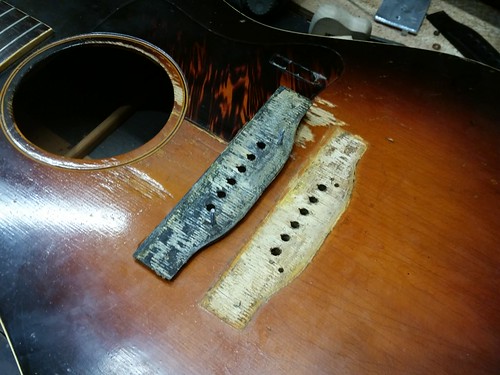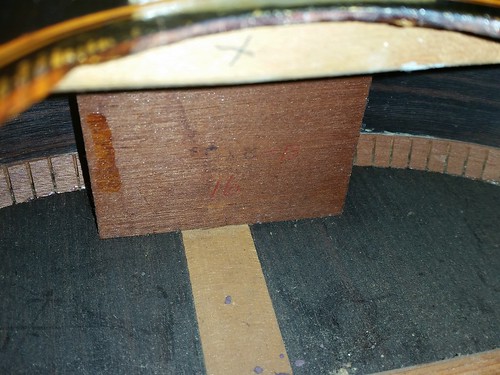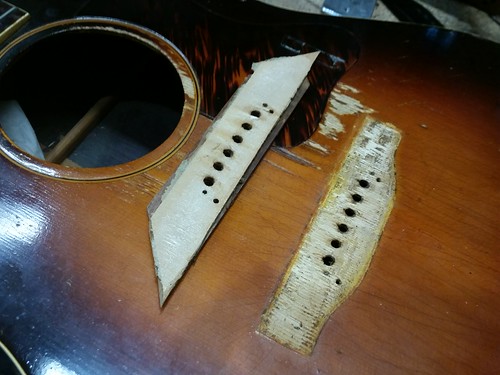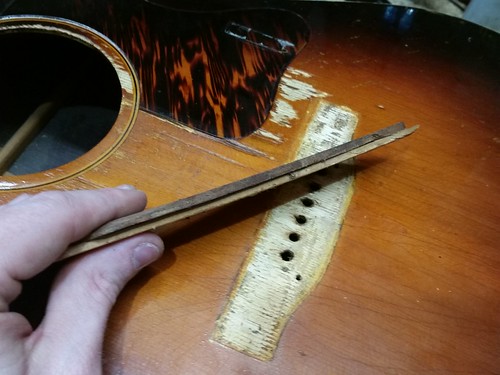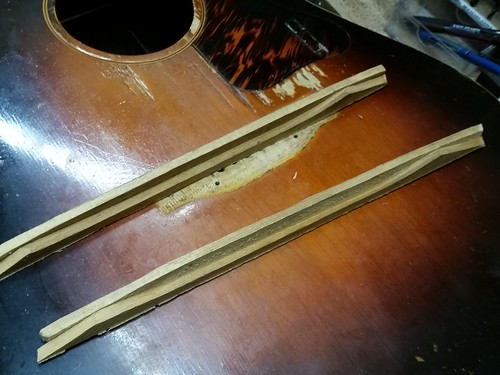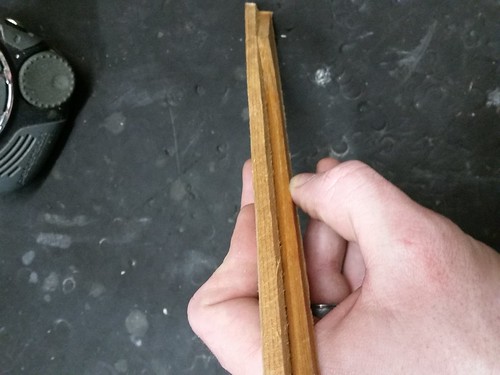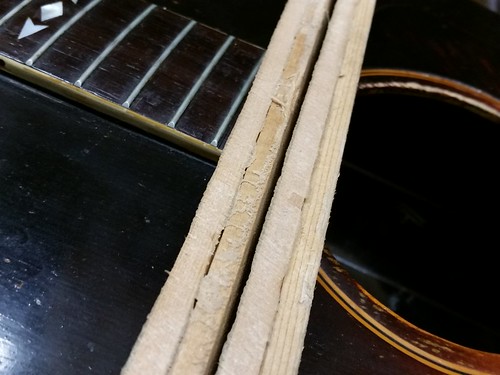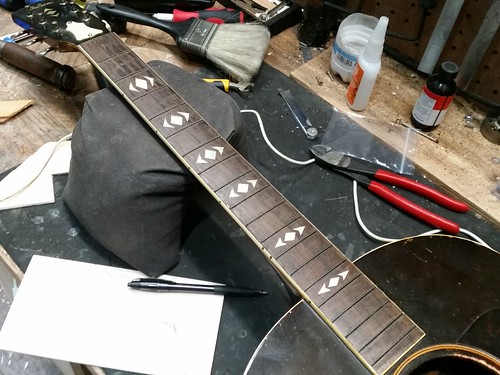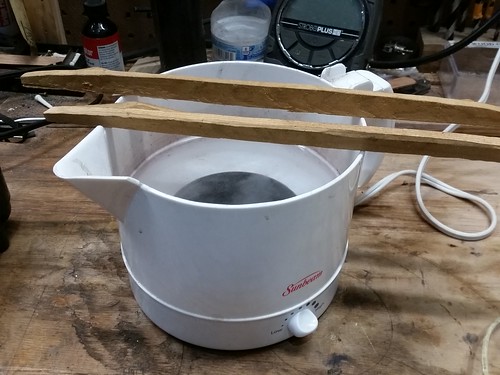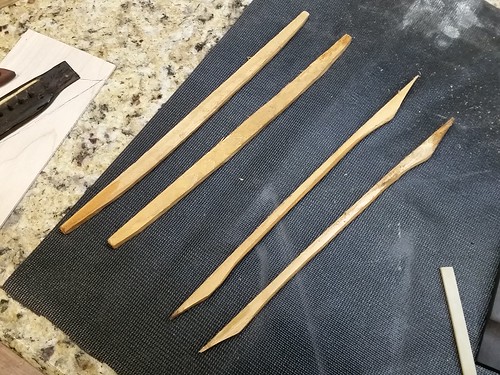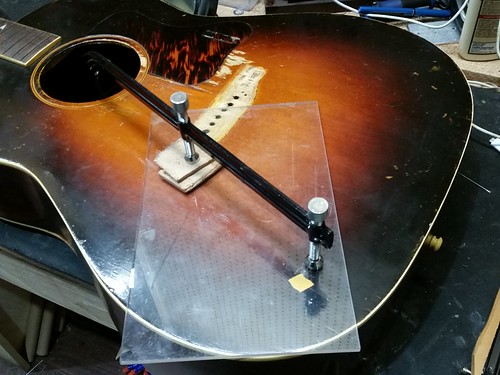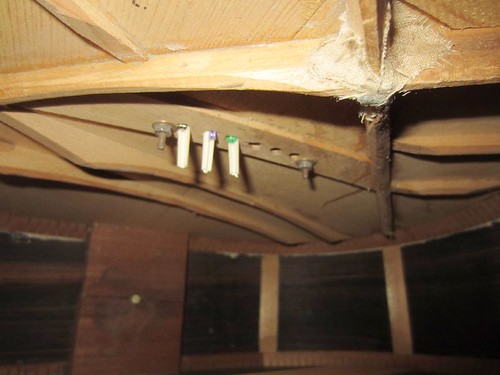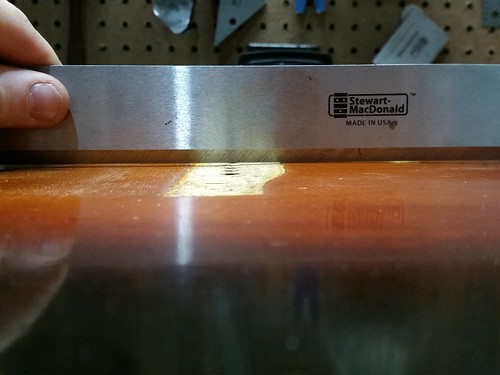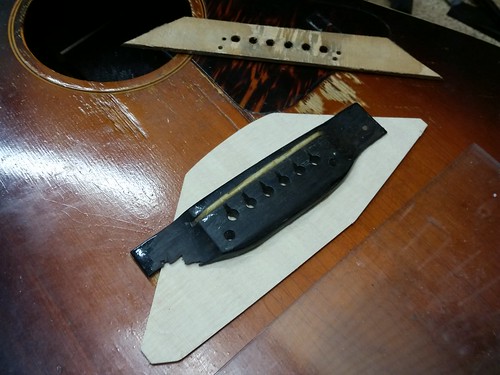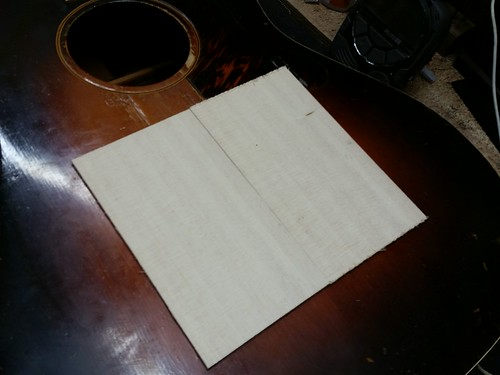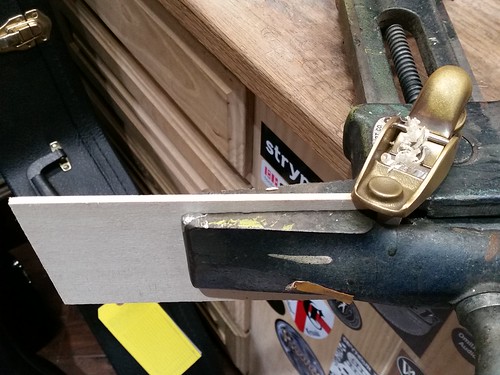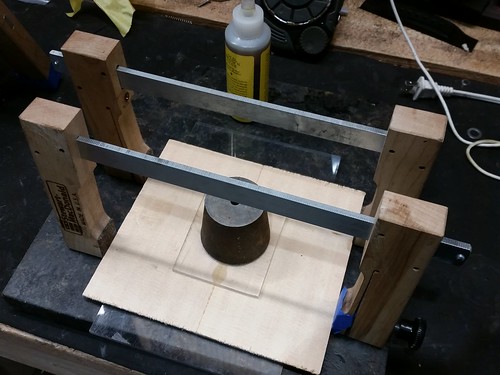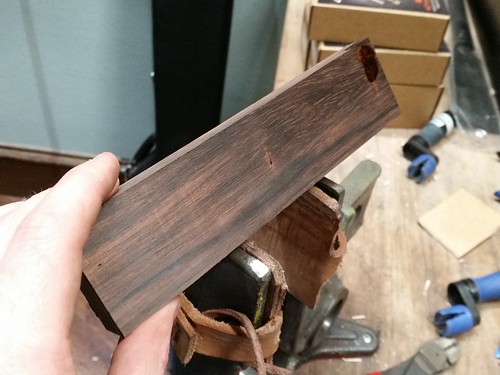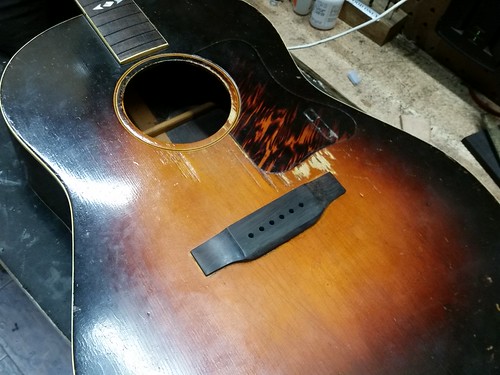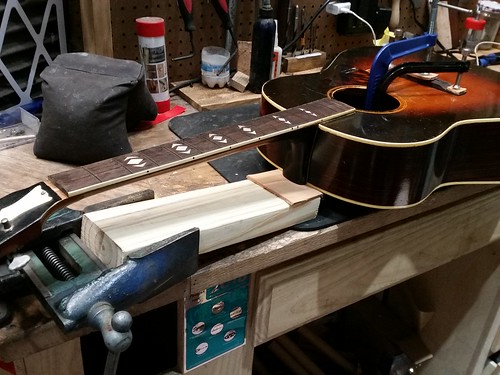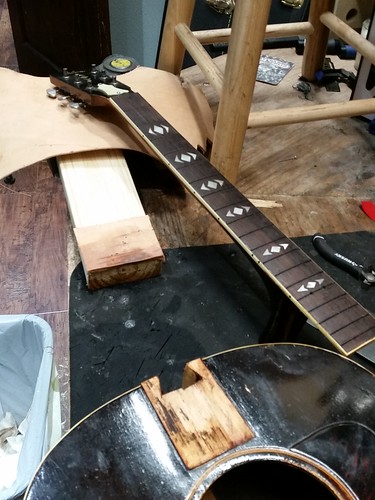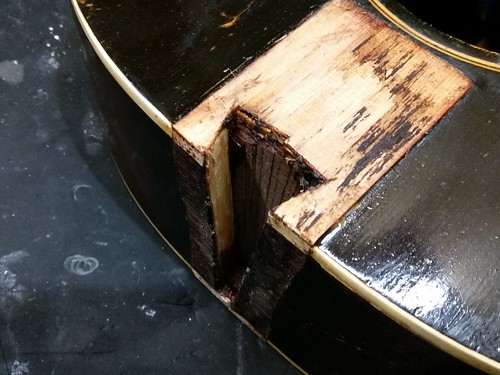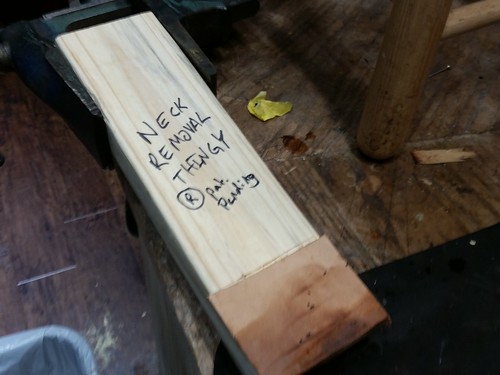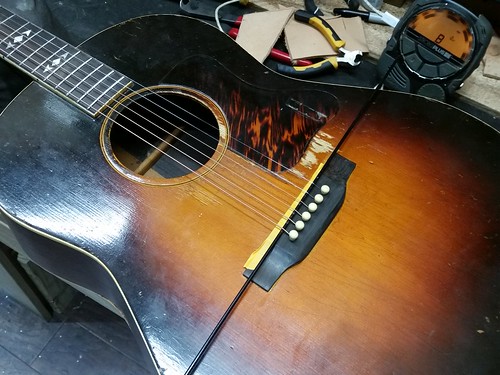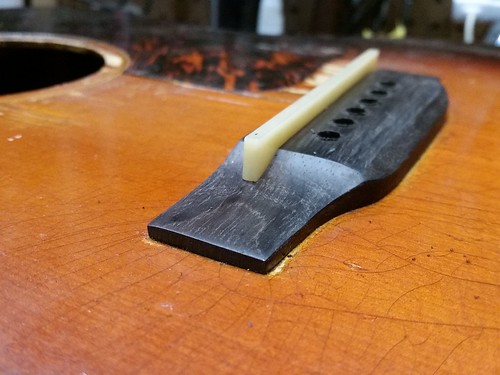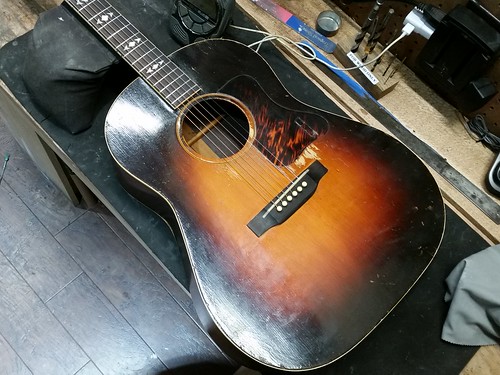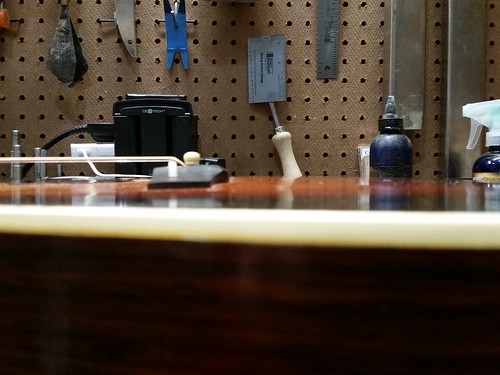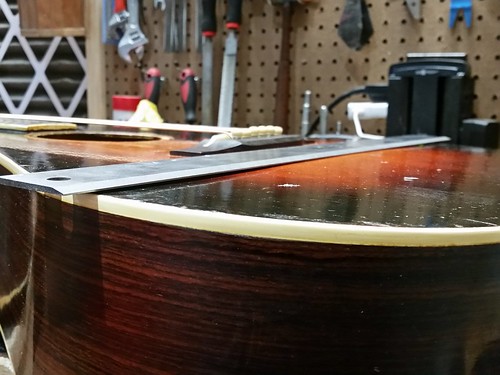I got a call from one of the owner's friends. Says he had his grandfather's acoustic guitar that he bought new from a pawn shop back in the day.
This showed up a few hours later. A fairly rare bird.
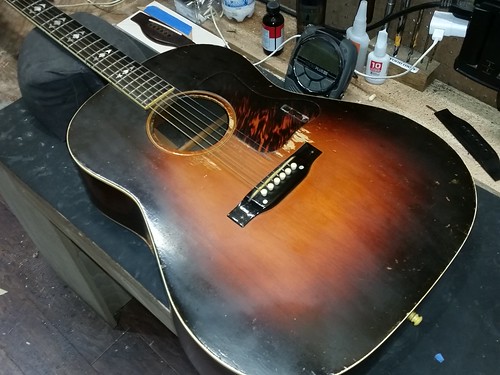

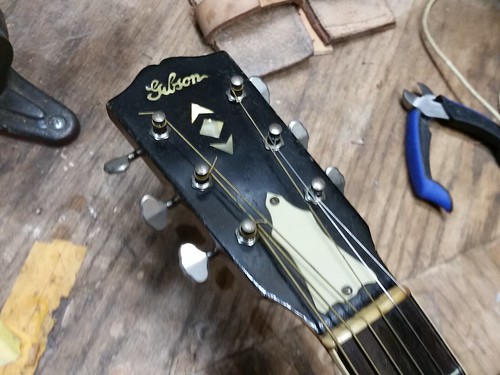
He had initially brought it in to get it dated and see what the heck he had inherited. I got pretty excited to say the least. But when I played it I realized that it had issues. Even with a new set of strings the tone was dead and flabby, had little to no sustain and very little of that typical pre-war Gibson sound, sounded very "compressed" if that makes sense. So I convinced him that it needed work and he agreed to it. It's had a rough life and he is wiling to have it made into a playable machine moreso than a perfect period correct collectors piece. Although it's a pretty desirable guitar even with the stupid "mods" that have been made to it.
Initial survey of problems. The projection is ridiculously low, neck needs a reset obviously. The bridge is a replacement martin style bridge and has been cut down to a sliver. The previous "tech" put these weird little "pins" on the wings of the bridge to keep it from coming up I guess? He did make sure to use the original screws from the factory. Add to all this the fact that someone also saw fit to slather finish on the bridge, top, and the fingerboard for..... reasons?
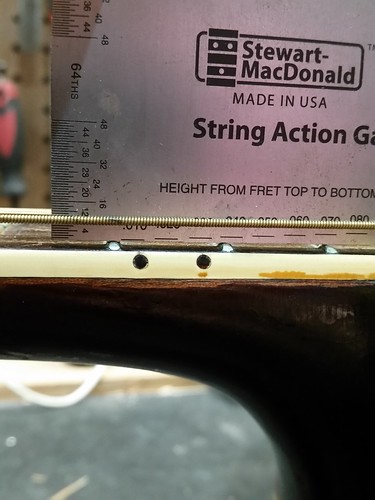
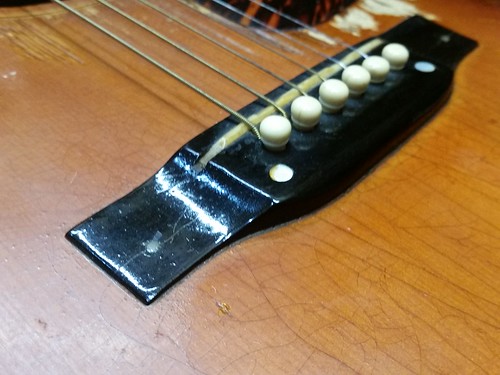
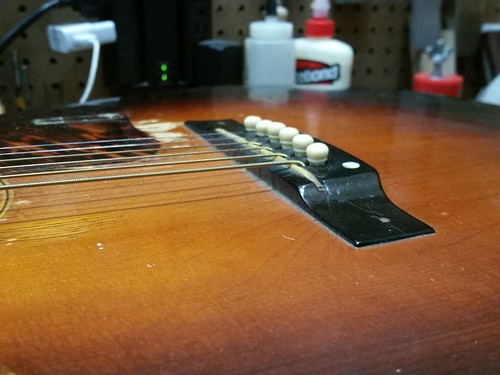
And here is the reason I believe the tone is so dead.
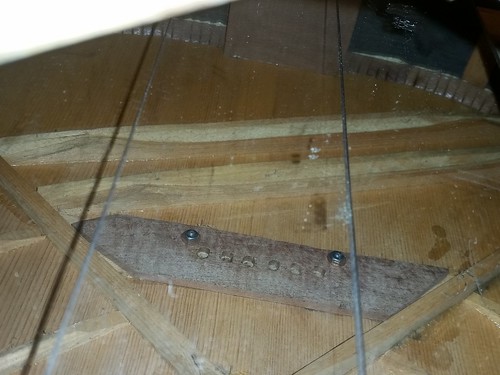
Another view
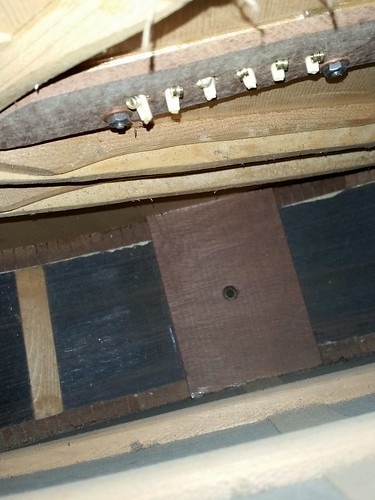
Those are essentially added on braces to the factory braces. If this is factory original (which I *highly* doubt) then whoever assembled this thing was thinking through a bottle of meth or something. Add to that the fact that the bridge plate has been overlaid with a THICK piece of some weird hardwood.
So, here is my plan thus far and feel free to offer advice. I'm always willing to learn.
In no particular order.
1. Remove/replace bridge
2. Remove/replace bridge plate (I will try to save the original if possible, but I don't think it's going to be possible)
3. Remove extra "braces" from original braces
4. Patch cracks (there's only one small one from pickguard shrinkage)
5. Neck Reset/Refret if needed
What I'm curious about are the added braces. I'm going to crack into it tomorrow and see exactly what I'm up against with it. I sincerely hope that they're not glued to the original braces or something like that, it would suck to have to remove the originals and put them back. I can't tell with my mirrors exactly what is going on with them.
this'll be a great one I hope when it's done. I've only heard 1 other vintage AJ in my life and it was spectacular.
More to come, like I said feel free to offer thoughts/advice (constructive preferably)
